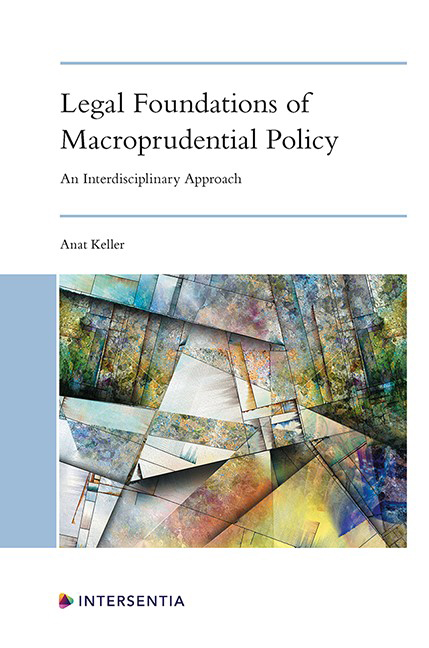Book contents
- Frontmatter
- Dedication
- Contents
- List of Cases
- List of Instruments
- Chapter 1 Introduction and Background
- Chapter 2 A Macroprudential Mandate: How to Operationalise it
- Chapter 3 Institutional and Procedural Design for Macroprudential Regimes: Institutional Models and the Nature of the Decision-Making Process
- Chapter 4 Powers of Macroprudential Authorities and the Use of Soft Law
- Chapter 5 Formulating a Taxonomy of Supervisory Approaches in Macroprudential Policymaking
- Chapter 6 Activating and Calibrating Macroprudential Instruments
- Chapter 7 Independence, Accountability and Transparency of Macroprudential Policy
- Chapter 8 A Non-Dichotomous View of Macroprudential Policy and Other Policy Areas
- Chapter 9 Data Collection and Analysis in Macroprudential Policy: An Epistemic View
- Chapter 10 Th e Global Architecture of Systemic Risk Regulation and Supervision
- Index
- About the Author
Chapter 7 - Independence, Accountability and Transparency of Macroprudential Policy
Published online by Cambridge University Press: 03 October 2020
- Frontmatter
- Dedication
- Contents
- List of Cases
- List of Instruments
- Chapter 1 Introduction and Background
- Chapter 2 A Macroprudential Mandate: How to Operationalise it
- Chapter 3 Institutional and Procedural Design for Macroprudential Regimes: Institutional Models and the Nature of the Decision-Making Process
- Chapter 4 Powers of Macroprudential Authorities and the Use of Soft Law
- Chapter 5 Formulating a Taxonomy of Supervisory Approaches in Macroprudential Policymaking
- Chapter 6 Activating and Calibrating Macroprudential Instruments
- Chapter 7 Independence, Accountability and Transparency of Macroprudential Policy
- Chapter 8 A Non-Dichotomous View of Macroprudential Policy and Other Policy Areas
- Chapter 9 Data Collection and Analysis in Macroprudential Policy: An Epistemic View
- Chapter 10 Th e Global Architecture of Systemic Risk Regulation and Supervision
- Index
- About the Author
Summary
An independent macroprudential authority can make “ tough “ policy decisions that can have distributional effects and reduce economic growth in the short term ( Chapter 6 ), without succumbing to political pressures and industry capture. Nonetheless, the discretion of the macroprudential authority cannot be without constraints and must be complemented by strong accountability and transparency arrangements. The effectiveness of accountability and transparency as a countervailing force to independence in macroprudential regimes is likely to be dependent on the legal and institutional context in which the macroprudential authority operates.
Therefore, the form of these arrangements and their strength will naturally differ widely across jurisdictions. Still, independence, accountability and transparency mechanisms may share a common ground that can be traced back to the concept of legitimacy on its various dimensions. Understanding legitimacy and particularly throughput legitimacy as a theoretical underpinning of good governance in macroprudential regimes and its balance with expertise and discretion will be the focus of this chapter.
The aim of this chapter is, accordingly, threefold. The first is to provide a theoretical framework for the independence, accountability and transparency of macroprudential authorities, by synthesising diverse concepts and ideas developed in the literature on bureaucratic discretion and delegation to independent regulatory agencies. In particular, the chapter draws parallels (alongside fundamental differences) with the burgeoning academic discussion of central banks ‘ independence. Second, after establishing the need (and the associated risks) for macroprudential authorities to be independent, the chapter sets out to make its complementary concepts, transparency and accountability, operational. It does so by identifying their key dimensions and the unique demands they present in the macroprudential sphere and drawing upon procedural mechanisms that are firmly anchored in administrative law traditions.
Third, the chapter assesses how accountability and transparency arrangements can be designed and implemented to improve the macroprudential authority ‘ s various forms of legitimacy. The transparency and accountability frameworks of the FPC, FSOC and ESRB are used as case studies for that purpose.
It is suggested that in the macroprudential sphere, the focus of accountability mechanisms, at least in the early stages of the policy development, should be on the decision-making process (to be differentiated from policy results).
- Type
- Chapter
- Information
- Legal Foundations of Macroprudential PolicyAn Interdisciplinary Approach, pp. 177 - 216Publisher: IntersentiaPrint publication year: 2020



